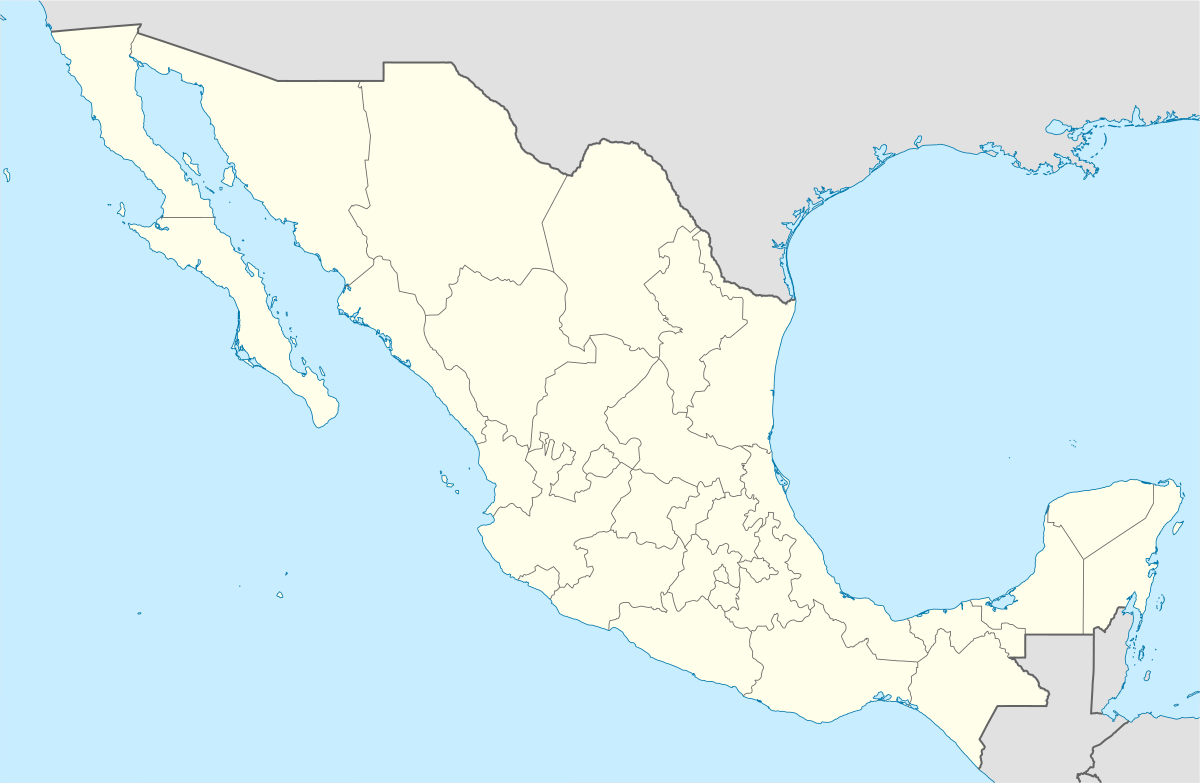San Pedro Mártir Island
Coordinates: 28°22′49″N 112°18′25″W / 28.38028°N 112.30694°W
| Native name: Spanish: Isla San Pedro Mártir | |
|---|---|
 San Pedro Mártir | |
| Geography | |
| Location | Gulf of California |
| Coordinates | 28°22′49″N 112°18′25″W / 28.38028°N 112.30694°W |
| Area | 2.72 km2 (1.05 sq mi) |
| Administration | |
|
Mexico | |
| State | Sonora |
| Demographics | |
| Population | uninhabited |
| Official name | Isla San Pedro Mártir |
| Designated | 2 February 2004 |
| Reference no. | 1359[1] |
San Pedro Mártir[2][3] is the name of an island of Mexico,[4] located in the Gulf of California, about halfway between the coast of Baja California and Sonora. San Pedro Mártir is located in the center of the Gulf of California and is the most remote island in the Sea of Cortez. It is located 51 km from Baja California and 53 km off the coast of Sonora. The island is 2 km long and 1.5 km maximum width, with a total of 2,729 km2 of total area (272 hectares). The island is uninhabited and is 60 km from Bahía Kino, the nearest city in the state of Sonora on the west coast.
San Pedro Martir is also unique in the area for its year-round quantity of birds. The island is the only island in the area with a perpetually swirling cloud of sea birds. The large bird population deposits enormous quantities of guano on the island, resulting white appearance of the island with sparse vegetation. The blue-footed booby is common on the island, using the island as nesting grounds. Sea lion rockeries also ring the island.[5]
The Seri Indians created benches to attract nest building and ease of egg collection, the sole evidence of human intervention visible on the island. In the late 19th and early 20th century guano was heavily mined off the island and shipped as far as Europe for use as fertilizer. Mining boats brought the black rat as an invasive species to the island. The rats were eradicated in the fall of 2007 by spraying rat poison on the island.[6]
San Pedro Martir is seldom visited, having near vertical sides leaving only questionable fair weather anchorages in two locations. Landing access was possible near a small isthmus in the southeast of the island, but is now forbidden. In 2005, the island was classified along with 244 others as a World Heritage Site by UNESCO, and included in the Islands and Protected Areas of the Gulf of California.
References
- ↑ "Isla San Pedro Mártir". Ramsar Sites Information Service. Retrieved 25 April 2018.
- ↑ "Archived copy" (PDF). Archived from the original (PDF) on 2007-07-08. Retrieved 2007-07-08.
- ↑ http://www.fmcn.org/documentos/Historia_mares_12.pdf%5Bpermanent+dead+link%5D
- ↑ "Article" (PDF). www.revistauniversidad.uson.mx.
- ↑ "Archived copy" (PDF). Archived from the original on 2015-09-26. Retrieved 2015-11-23.
- ↑ "Isla San Pedro Martir". 11 August 2011.